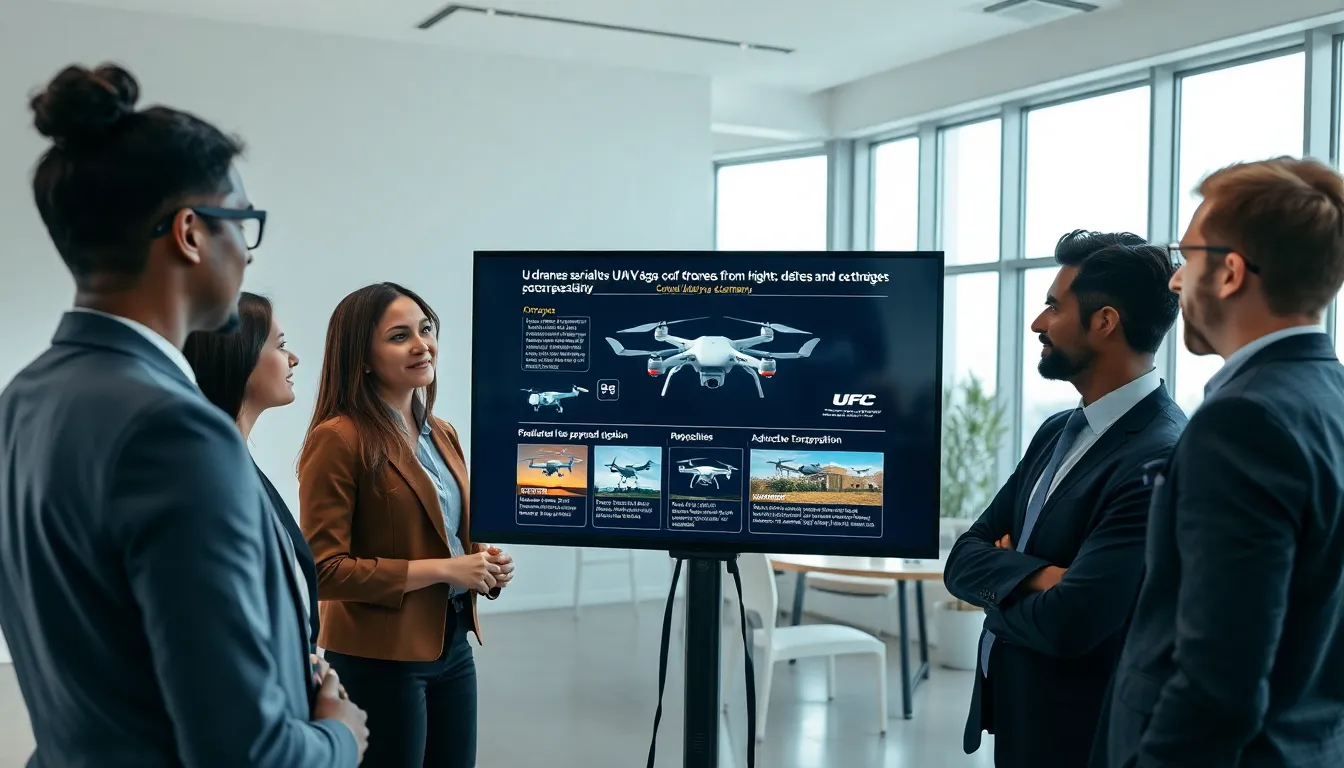Drones are buzzing around Germany like bees in a flower garden, and it’s hard to ignore all the excitement. From stunning aerial photography to life-saving deliveries, these high-flying gadgets have transformed industries and captivated imaginations. Ever wondered how drones made their way into the German skyline and what rules govern their flight? Buckle up. In this text, we’ll explore the evolution of drones in Germany, the regulations keeping them in line, their diverse applications, and what challenges and future opportunities lie ahead. Let’s jump into this intriguing realm, who knew the sky could be so filled with possibilities?
Table of Contents
ToggleThe Evolution Of Drones In Germany

Drones have come a long way since their early military applications. The journey began in Germany in the early 20th century, when experimental UAVs were used primarily for reconnaissance. Fast forward to the 2000s, and products geared towards hobbyists started flooding the market. These mini-drones were relatively accessible and inexpensive, making them popular among photography enthusiasts.
In recent years, but, the real transformation began. Companies like DHL and Amazon started exploring delivery drones, turning heads and sparking interest from various sectors. The integration of advanced technologies like AI and machine learning has also paved the way for more sophisticated uses. Today, drones in Germany are not just for fun, they are serious tools employed across sectors like agriculture, construction, and even public safety.
Key Regulations Governing Drone Use
With great flying power comes great responsibility. Germany has established a comprehensive set of regulations to ensure drones are used safely. The German Air Traffic Control Agency, DFS Deutsche Flugsicherung, oversees drone operations. Pilots must adhere to rules set forth by the European Union Aviation Safety Agency (EASA), which include registration for drones over 250 grams, obtaining pilot certificates, and following specific flying guidelines.
Drone operators are required to fly below 120 meters and keep their devices within visual line of sight, unless they have special permission. Also, many areas are off-limits, especially around airports, military bases, and populated regions. Navigating these regulations can be tricky, so anyone interested in using drones in Germany should familiarize themselves with the latest updates and guidelines.
Applications Of Drones Across Various Industries
Drones are no longer just high-tech toys: they are invaluable assets across a myriad of industries. In agriculture, farmers use drones to monitor crop health, assess land conditions, and even assist in planting seeds. These birds-eye views can save time and resources while boosting productivity.
In the construction sector, drones help site surveying and real-time inspection, providing insights that help streamline operations. Insurance companies employ them to assess damages after natural disasters more swiftly. Public safety entities also rely on drones for search-and-rescue missions and disaster response, using their aerial views to make quicker, more informed decisions.
The creativity doesn’t stop there. In tourism, drone photography entices visitors with stunning views of popular attractions. And let’s not forget about arts and entertainment: filmmakers are increasingly incorporating drones into their work, capturing breathtaking shots that were once too costly or complex.
Challenges Facing The Drone Industry In Germany
Even though all the advancement and potential, the drone industry in Germany faces its fair share of challenges. Chief among these is regulatory compliance. Maintaining a balance between innovation and safety can be tough, especially as technology evolves faster than legislation can keep up.
Another critical issue is privacy concerns. With drones capable of capturing high-resolution images from great heights, the potential for invasive surveillance is a hot topic. German citizens are generally sensitive about privacy, so drone operators must tread carefully. Besides, the potential public backlash against perceived misuse could hinder further development in the sector.
Finally, the integration of drones into the existing air traffic systems is still a work in progress, leading to fears of congestion and mishaps in the air. Finding solutions to these issues will be vital for ensuring the continued growth of this industry.
The Future Of Drones In Germany
The future of drones in Germany looks bright, thanks in part to ongoing innovation and investment in the sector. As more companies explore the possibilities, we can expect to see enhanced functionalities and applications. Delivery drones may soon be commonplace, zipping around cities, dropping off parcels at your doorstep in record time. Plus, advancements in battery technology promise longer flights and expanded payload capacities.
Also, as regulations become more established, public acceptance is likely to grow. Education and initiation programs can alleviate fears surrounding safety and privacy, easing citizens into a world where drones are part of everyday life. Evolving technologies like 5G and enhanced GPS systems may further revolutionize how drones operate, enabling more autonomous features and greater coordination with other aircraft. Clearly, the sky is not the limit: it’s just the beginning.









